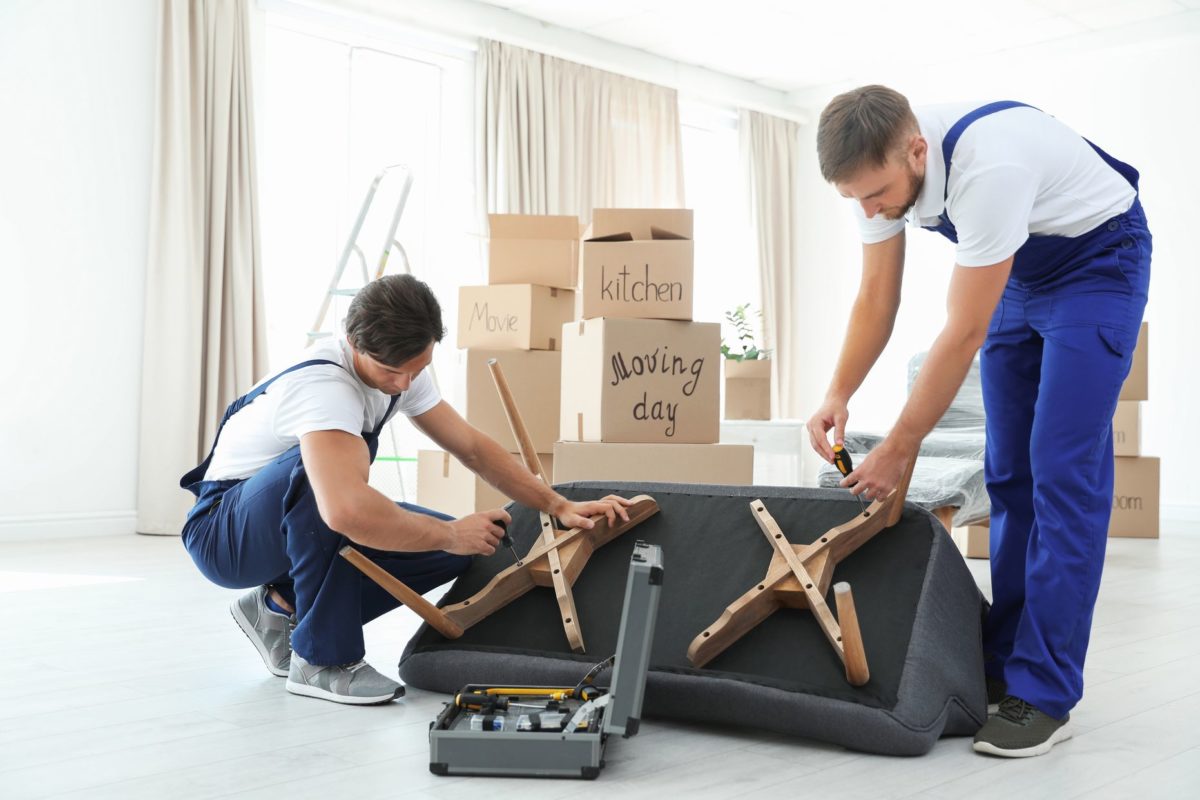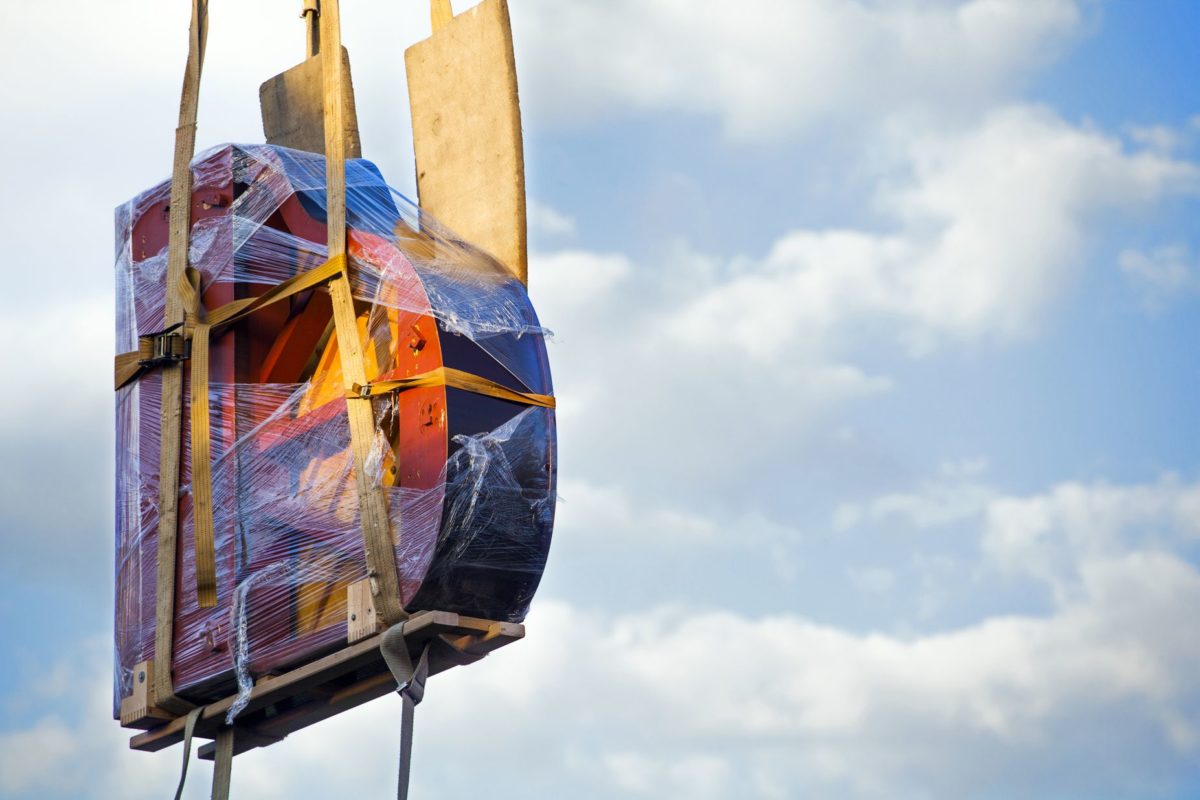If strained back, cuts and sprained ankles don’t sound tempting, you have to learn the ropes of moving large items so you can avoid injuries. And that is not all – know that handling bulky objects inappropriately can result in damage to both your belongings and former home. Fortunately, any harm to you, your belongings, and the house can be avoided. Follow our tips, and this heavy task (pun intended) will become a piece of cake.
From the smallest screw to the bulkiest object - our tips have got you covered
#1 Plan How to Move Heavy Items Before You Start
As everything concerning moving cross-country, relocating big and bulky stuff needs to be carefully planned. The golden rule concerning relocation is that the more thought you put into organizing your move, the more success you’ll meet. When it comes to moving furniture and other big things on your household inventory list, before you start, you must determine:
- Will you do it by yourself or with the assistance of professionals?
- Where to start and when?
- Which belongings will be relocated and which will not?
- What equipment and supplies will you need?
To Hire Cross-Country Movers or to Perform the Move by Yourself?
Many people looking for the cheapest way to move out of state choose to perform a DIY version of a move instead of getting cross-country moving services. However, if your relocation budget allows it, know that hiring professionals is the better choice by far. Not only will movers assist you with tricky tasks, like packing kitchen items, but they will do all the lifting on your behalf.
Professional movers possess all the knowledge and equipment needed for the biggest and bulkiest of your belongings, so you can be worry-free when the time for relocating them comes. If you are not looking for ways to reduce the costs of the move, keep in mind that some of the best companies in the country can offer you a custom crating service. With it, you won’t have to wonder how to move a piano or if your treadmill will survive the long-distance move.
So, if you decide to hire a cross-country moving company, remember to contact their representatives and find out everything regarding the packing services they offer. If you are in a position to pick, ensure to make this part of your life a little bit easier.
#2 Purge What You Won’t Use in the New Home
Before you start disassembling and packing, you need to declutter your old place and decide what to get rid of. Apply the one-year rule on all of your belongings, including the big ones. Think about when the last time you actually used an item in question was. There must be some old and forgotten ottoman or a couch in your storage. They may be patiently waiting for you to fix them, but we all know that it will never happen.
If the item doesn’t have any sentimental value and you utilize it rarely or never, decide what to do with it appropriately. There is plenty to choose from – throw, gift, sell, or donate unwanted things. If you’re thinking about hiring a long-distance moving company, know that downsizing for a move can positively affect even total relocation costs, too. Remember that the quote is often based on the weight of your inventory, and things like beds, closets, sofas, and appliances tend to be pretty heavy.
Create a Layout for Your New Place
Determining what not to bring with you can be a lot easier if you have a picture of your new place in mind. That way, you can free yourself from all of the belongings that won’t fit, physically and aesthetically, in the new space. That is especially important if you are relocating from a house to an apartment. Smaller spaces will demand a lot less of your bulky stuff and a lot more of your creative storage ideas.
Don't do all the lifting and relocating in vain - decide upfront what belongs in your future home
#3 Gather All the Equipment You’ll Need Before the Relocation Day
Even though some of the packing materials you can acquire on the day of the move, it’s not the case with the equipment necessary for relocating the largest of your household goods. First of all, you have to decide what you are going to use and then plan the way of getting it. Keep in mind the following possibilities:
- Utility/furniture dollies – if you don’t intend to carry, push, or drag your stuff through the home, these dollies are your best choice. The only difference between them is in the size of the base, so choose the one that will suit you the best. The really good part is that you don’t have to buy them before the relocation because they are rentable. Just make sure to rent them on time.
- Sliders – these can be another useful part of the relocation day equipment, especially when dollies are not an option. Just remember that different kinds of floors demand different types of sliders. Plastic sliders are an excellent choice for carpeted floors, for example, but they can damage hardwood floors.
- Stair-roller – it will be a part of your moving essentials if your home has a staircase. Remember that staircases are the part of the house where you’ll get injured most easily when relocating. Having a stair-roller can be an excellent way of preventing it. And if you are relocating to a building without an elevator, you’ll thank the heavens you thought of stair-rollers on time.
- Lifting straps – they can be a lifesaver when lifting is necessary, as long you have a friend to help you carry big and bulky things. They are designed with one purpose – to position the weight of the carried item on the stronger parts of your body. With them, carrying all of your goods will become a lot easier than you could imagine.
Having a dolly can help you not only with big objects but boxes, too
#4 Empty and Disassemble What You Can
Some may advise you to move your cabinets, drawers, and the like with all of your belongings in them. We, however, advise strongly against it. Not only can your smaller things get damaged, but they can also damage the object in which they’re placed.
After emptying a piece of furniture, if it cannot be disassembled, ensure to tape all the drawers and doors so they won’t open during the move. On the other hand, if disassembling is possible, don’t skip it. It is an excellent way of making anything easy to load on the truck. Simultaneously, it will allow you to pack and protect each disassembled part better, which will reduce the possibility of damage.
When the time comes for disassembling, try not to mix tiny parts (screws, bolts, nails, and so on) that belong to a different piece. Instead, prepare several small zip bags, put the small parts inside, and label them.
Every larger object that can be disassembled into smaller parts should be
#5 Get Your Furniture and Appliances Ready for the Move
Furniture, appliances, and all other staff have to be thoroughly cleaned before loading into the truck. Dust and crumbs shouldn’t be relocated to your future place alongside your household goods, so ensure to wipe all the surfaces clean. The same goes for your appliances, especially the stove. Put on gloves and scrub all the grease from it so it doesn’t damage other belongings. As for the fridge and washing machine, ensure they are completely dry before the relocation. Remember – you don’t want mold to start growing during transport.
Unplug and leave your fridge open before the relocation, so it can completely dry
#6 Make Sure That Every Item Is Completely Protected
Sadly, packing time doesn’t end when you close the last of your boxes. If you don’t want any of your belongings to get damaged, you have to know how to pack all of your heavy household goods. That way, they will be protected not only during transport but also in storage units if you opt for a storage service.
Firstly, you have to wrap each piece with a material of choice. It can be anything from old rugs and clothes to relocation blankets, specially designed for protecting your belongings during the move. Whatever you choose, be sure to secure the wrapping material with tape, but don’t let it get in contact with painted and polished surfaces. Secondly, ensure to keep all the edges protected. You can utilize packing paper, bubble wrap, or cardboard pieces. Remember that corners are the most likely parts to get damaged and damage some other object or part of the house.
Be Careful When Packing Each Valuable Item
The more delicate an object is, the more careful you must be with it. Small, fragile objects can be hard to pack, but big and valuable ones can be a nightmare. For stuff that is that tricky to move (antiques, grandfather clocks, pianos, and so on), it’s always best to seek the assistance of highly trained movers. As we mentioned above, they have all the knowledge and equipment necessary to handle such a tricky task without a problem.
Don't risk damaging your most valuable possessions - search for a professional service
#7 Know How to Move Something Heavy Without Injuring Yourself
If you don’t want to get packing services, lifting, carrying, and pulling will be up to you, so be sure to:
- Ask friends for help – even if you are at the top of your physical shape, don’t try to move everything by yourself. It is one of the most common relocation mistakes that can lead to many issues.
- Wear protective equipment – you don’t need a safety helmet, but keep in mind that a pair of gloves can protect your hand from blisters.
- Clear every possible obstacle – when carrying big objects, you won’t be able to see anything in front or behind you. Removing anything on your pathway (including chandeliers and pictures on the walls) is essential for preventing injuries.
- Work smart, not hard – don’t do anything by force. When relocating a huge sofa, for example, calculate the angles and hook the object around the corners.
- Use proper lifting techniques – don’t bend from the waist, but go into the squat position when lifting. It will prevent back injuries.
- Use the high-low system – it’s especially important with tall furniture. One person needs to hold the top of the object at a suitable angle while the other will carry the bottom.
- Avoid turning and sudden movements while lifting and carrying,
- Keep objects close to your body – the further they are, the heavier they get.
Ensure to Protect the House, Too, When Moving Furniture and Other Bulky Objects
When relocating bulky objects, there is always the possibility of unintentionally damaging the house. It can be very inconvenient, especially if you expect to sell it soon or want to get your deposit back. That is why you have to take time to protect all the surfaces in your home, even if you have a last-minute move. The good thing is that you don’t have to waste any money on special materials. You can use old blankets, linens, towels, or cardboard for floors, walls, and staircases and ensure they stay safe and undamaged.
However, accidents happen, and you may make a scratch or two on your hardwood floors. In case that happens, be sure to watch the following video. It will show you how to fix a scratch so that it becomes almost nonexistent.
When Moving Large Items Across the Country, Long-Distance Movers Are Your Safest Bet
Injuries, scratches, damage – it can all be avoided if you get long-distance moving services and let professionals do what they know best. They are familiar with all relocation hacks regarding moving even the bulkiest of objects. Hiring them will guarantee you a stress-free move, at least when it comes to heavy lifting. If you deem that help from friends is not enough or you just don’t see yourself succeeding in this task, don’t hesitate. Contact the most reliable relocation company and ask for professional assistance.










